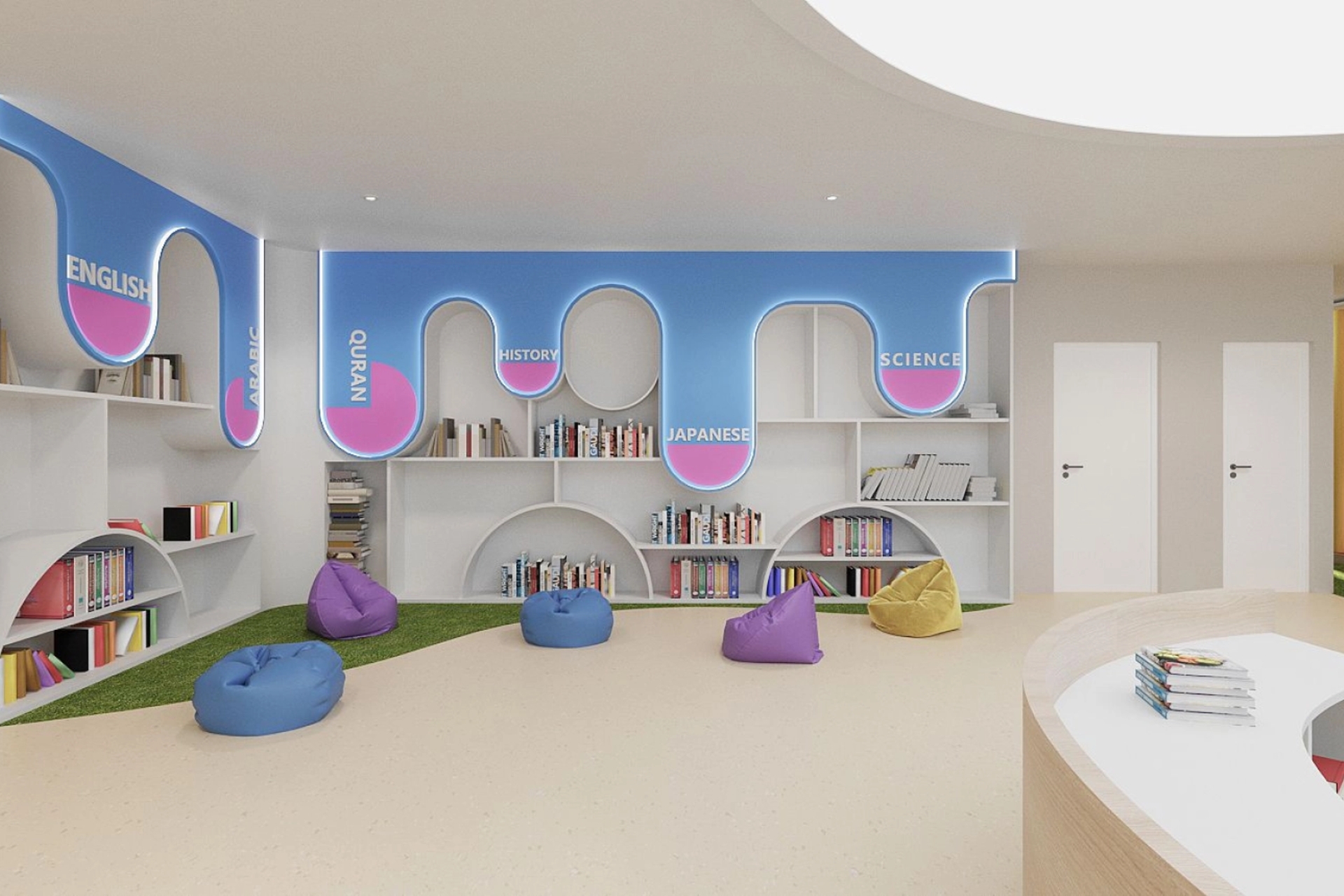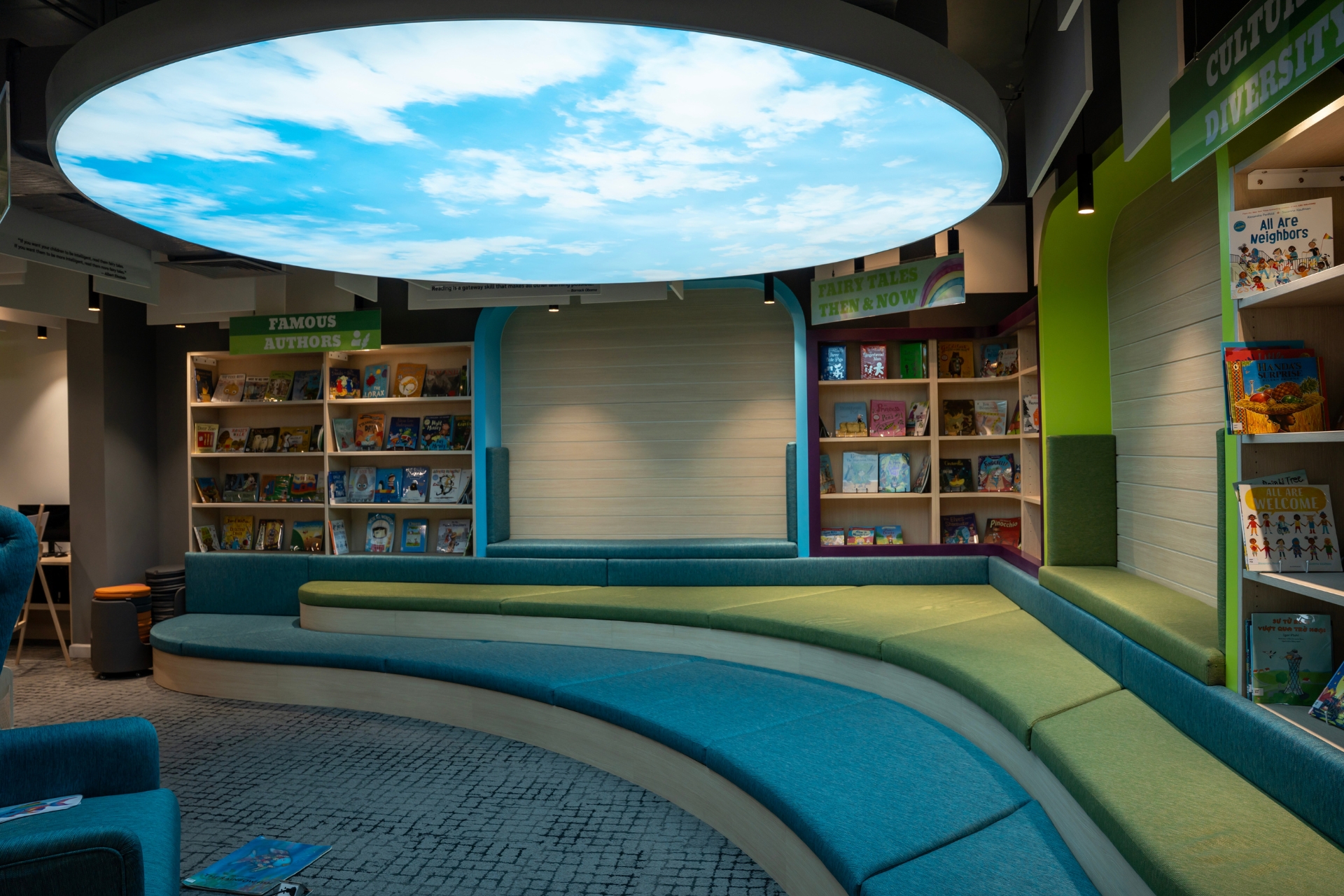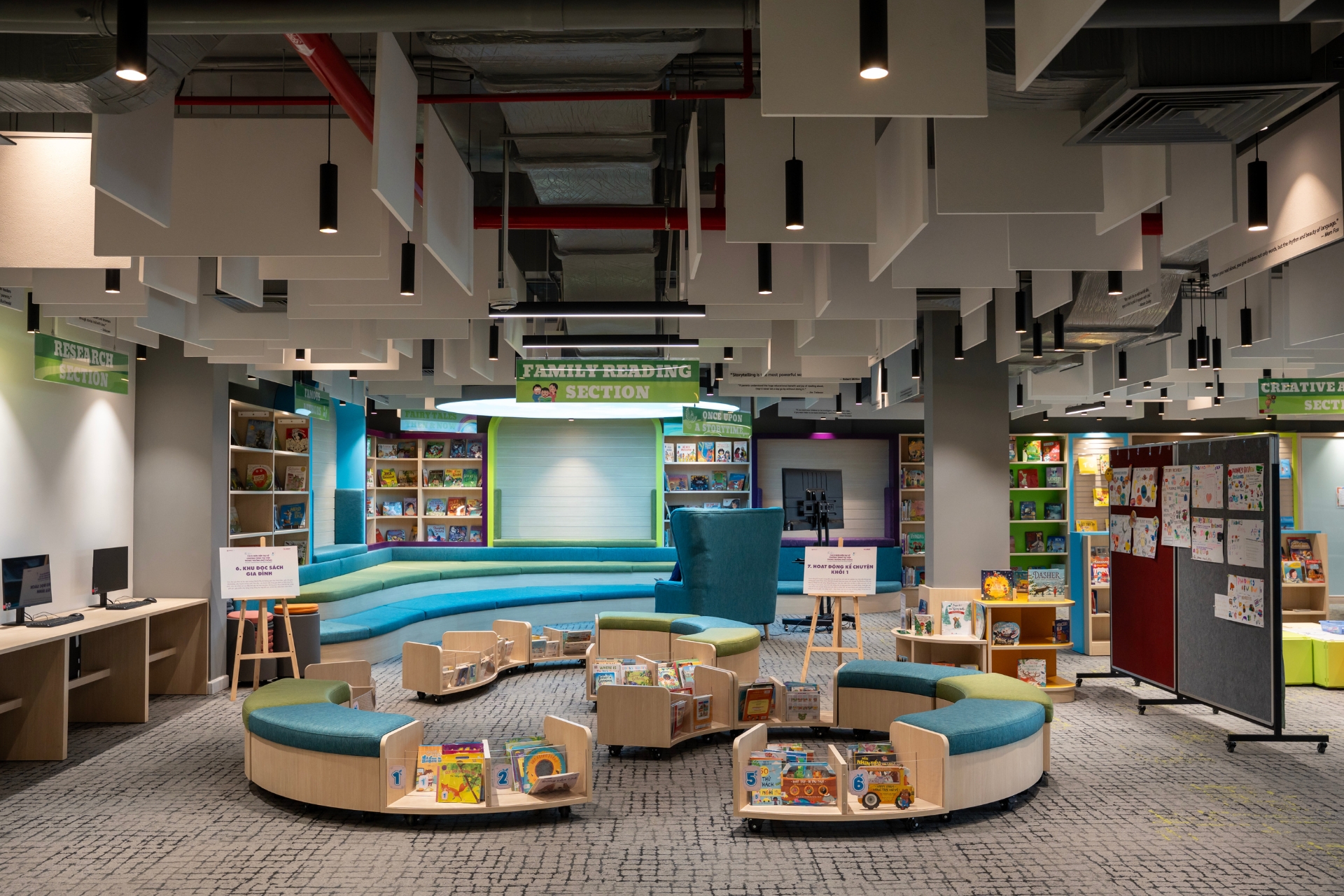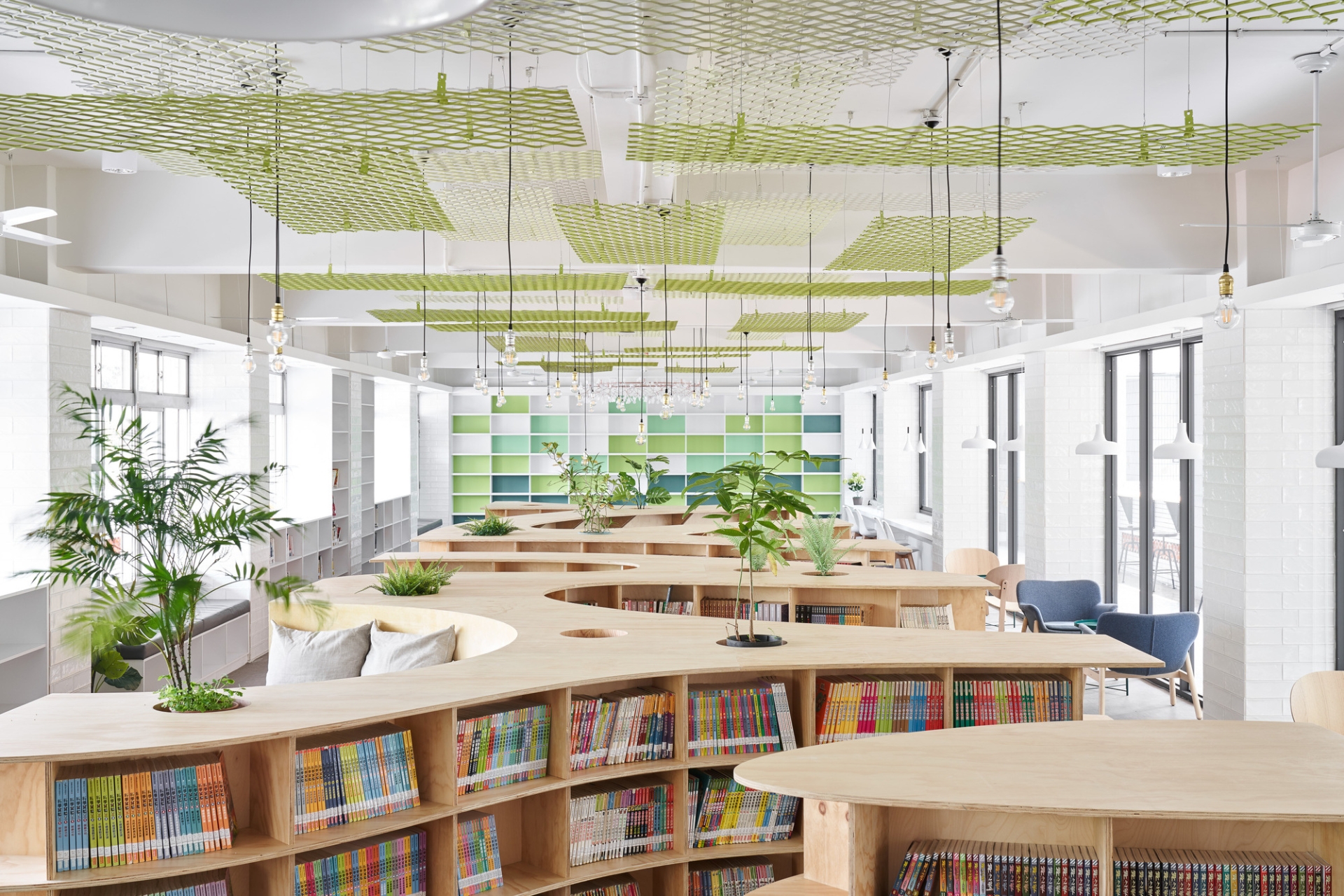
4 Key Principles in Organizing International School Library
In an international educational environment – where creativity, personalization, and lifelong learning are highly valued – the library is not just a place for storing books, but a center for connecting knowledge, culture, and technology. The layout of libraries in today’s international schools requires a harmonious integration of multiple factors to ensure a balance between functionality and aesthetics. Join TECO in exploring the key principles in the layout of international school libraries in the article below.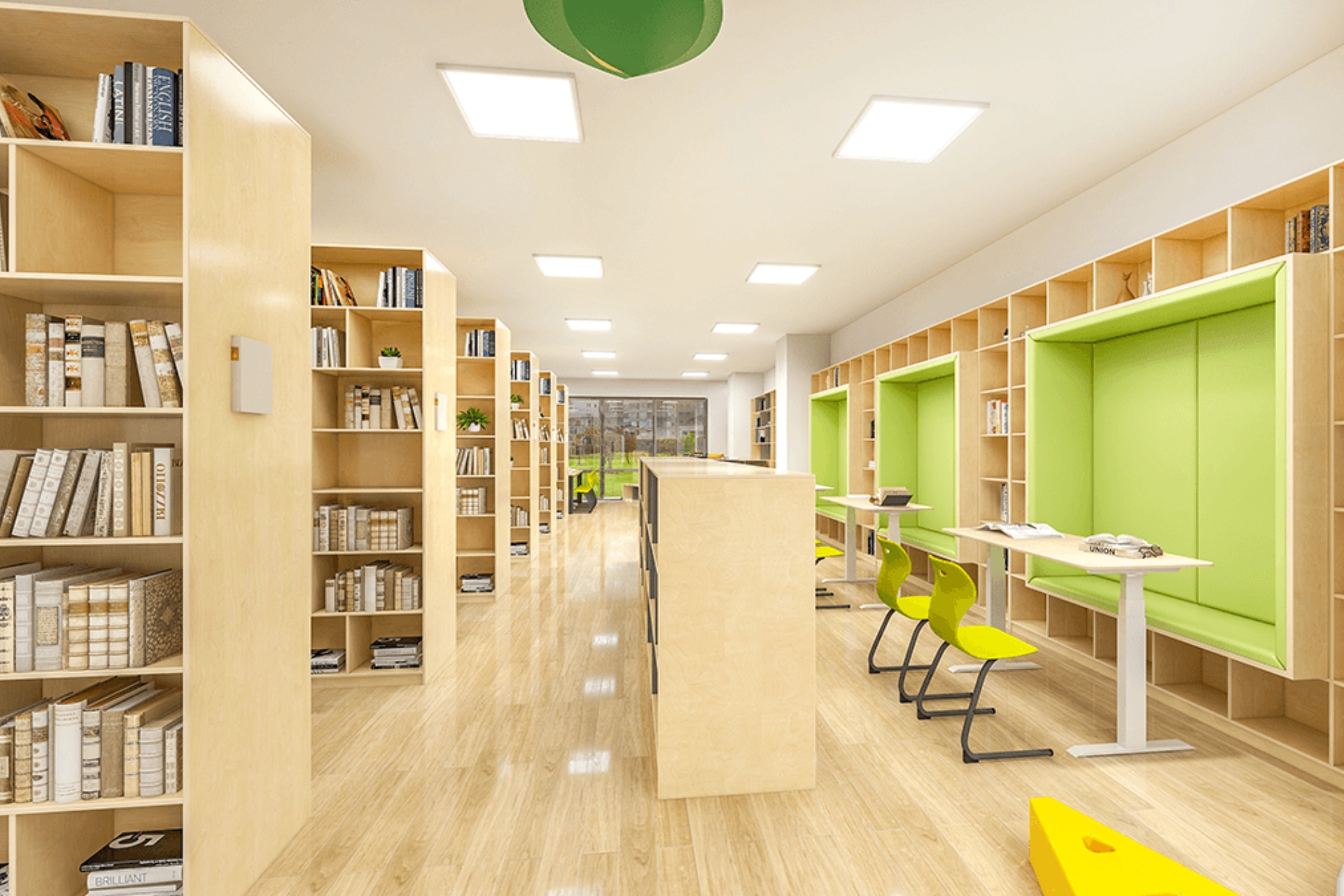
Core element in the layout of international school library
The Role of Library Layout in International Schools
The layout of a school library contributes to promoting learning, developing thinking skills, and inspiring students. Below are reasons why library space layout should be given careful attention.
Impact on Learning Effectiveness
A modern, scientifically arranged, and quiet library space allows learners to concentrate better and absorb knowledge more effectively. The quiet atmosphere also positively influences academic performance. In addition, comfortable seating and flexible group study areas enhance student interaction and proactive learning.
Inspiring the Love of Learning
The library is often considered the intellectual heart of a school — a launchpad that helps students access a limitless source of knowledge. More than just a place that houses books, it should be a space of inspiration — to inspire learning, reading, and a continuous curiosity to explore new horizons.

A beautiful library inspires students to learn.
Creating a Diverse, Flexible Learning Environment
A modern library space needs to be flexibly arranged with various functional areas. For example: group study areas, quiet reading zones, relaxation corners, digital experience zones, etc. Flexible zoning enables students to choose the space that best suits their needs — whether it’s for self-study, group discussions, deep research, or relaxation.
Key Principles in Designing International School Library Layouts
Principle 1: Fully Functional
When designing the space for an international school library, one must calculate based on factors such as: the number of students, number of teachers, collection size, curriculum, and the projected growth rate of added resources. It’s important to plan the initial design to meet the needs for at least the next 20–25 years.
Besides spatial planning, attention must be paid to other elements, such as: organizing each area appropriately – balancing architecture and function, integrating modern technology, investing in suitable equipment and furnishings that enhance functionality, comfort, and user interaction. Most importantly, a clear signage system must be designed, with complete and accurate directional signs placed in proper positions to help users quickly find their desired collection without assistance.

A library must fulfill all its functional requirements.
Principle 2: Flexibility in Design
This is a key factor that allows the library to become a multi-functional learning space that adapts to various educational activities. It is also a contemporary design trend, especially in learner-centered international educational environments.
Flexibility refers to “morphing” space based on usage needs. The library does not only serve individual reading but also supports group study, workshops, exhibitions, community gatherings, small seminars, project-based teamwork, creative activities, etc. Applying flexibility in library space design maximizes utility, serving multiple purposes and diverse user groups.

Ensure flexibility in design.
Principle 3: Aesthetic Value
Aesthetics in the design and layout of international school libraries is not a decorative afterthought but a vital element to enhance educational quality and inspire student learning.
The aesthetic aspect must meet several criteria:
-
Aligned with modern educational philosophy: International schools today pursue student-centered, personalized education that fosters holistic development. Aesthetics serves as a reflection of that philosophy.
-
Creative and exploratory design contributes to storytelling, triggering curiosity and imagination in students.
-
Aesthetics integrated with function: Beauty alone is not enough; it must be paired with utility.
Some aesthetic suggestions to apply:
-
Ensure visual contrast and use variations in color, texture, and patterns to differentiate functional zones. Colors and images should reflect the school’s international identity and stimulate students’ curiosity and imagination.
-
Use curves to open up space and avoid traditional straight rows of tables and bookshelves, which can feel industrial or warehouse-like.
-
Decorate with greenery and multicultural imagery representing the school’s identity.
Principle 4: Logical, Functional Zoning
Common functional areas in international school library spaces include:
-
Reception & Information Search Area: Should be located near the entrance, easy to recognize, and accompanied by a library map.
-
Book Display Area: Requires clear signage among shelves.
-
Quiet Reading Area: Should be distanced from group work or activity zones, with good sound insulation.
-
Group Study – Discussion Area: Can be placed near open activity zones, with long tables or 4–6 person modules.
-
Digital Library – Technology Area: Offers access to e-books and online materials; must be equipped with shared computers, laptops, and modern tech.
-
Creative Corner: A distinctive highlight of the library that sparks student creativity.
-
Experience – Relaxation Zone: May include beanbags, sofas, soft rugs, spaces near windows, and plants. Ideal for rest and mental refreshment.
Some rational zoning principles in international libraries include sound flow control, maximizing natural light, using highly flexible and expandable furniture, and technology integration. Crucially, design should focus on the user experience, evident through signage, color schemes, open walkways, etc.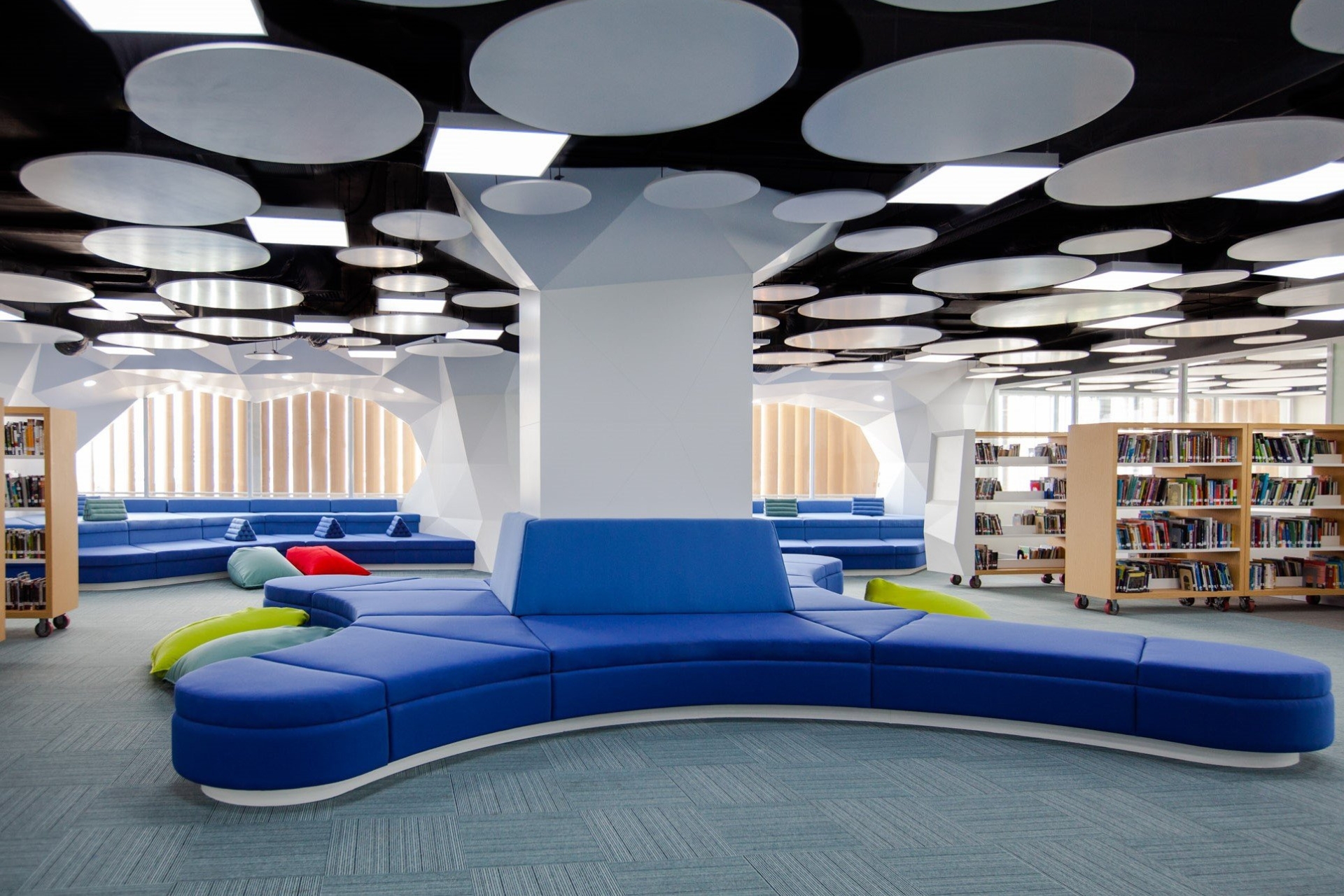
School libraries must feature logical and functional zoning.
Conclusion
International school libraries are no longer confined to the definition of a “reading room” but are now learning – creative – connecting – and knowledge-exploration spaces. These are places where students feel connected, engaged, creative, and effective in their learning journey.
TECO is proud to be a trusted, professional design and construction firm for international schools, with successful projects like Horizon International Bilingual School. Contact TECO for expert consultation and a detailed quote for your international school project.

